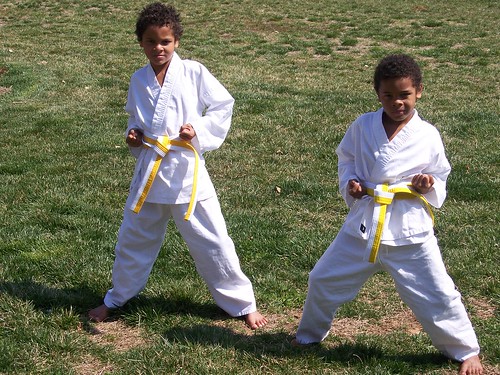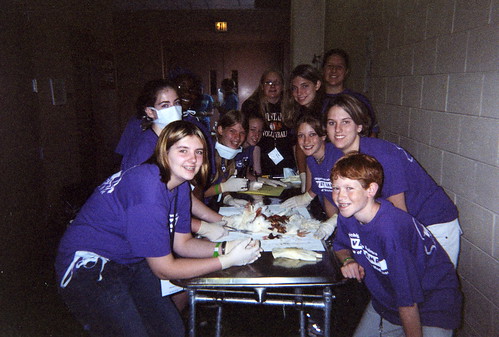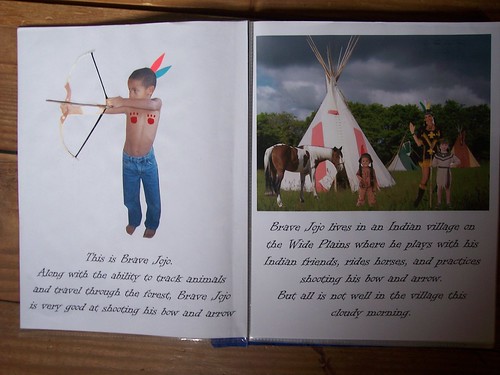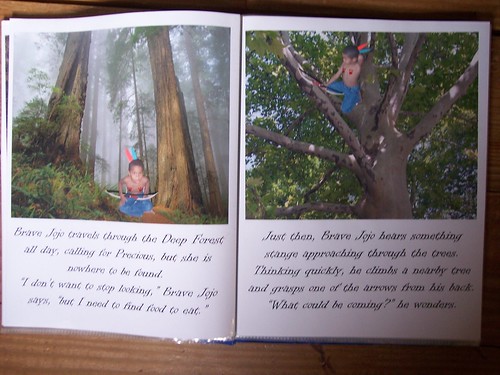How our homeschooled children present socially is always the first thing those who don’t homeschool bring up. And we then defend the position with the activities our children are involved in and how many friends they have and how many parties they are invited to. I have even heard people mention that they can tell if a person has been homeschooled, both from homeschoolers meant in a positive way, and from public schoolers meant in a negative way.
So, let’s get real. When I chose to homeschool my children, let alone unschool them, I assured the idea that they would be considered “different”. Choosing to unschool sets ME apart as “different”. Why wouldn’t it set my children apart as being “different”? And wasn’t that the point? Different means not the norm. The norm is the socialization received by those attending mass institutions of learning, in any shape or form. I was reminded again of what that socialization looks like when my two younger boys insisted upon attending a YMCA day camp for the summer. Last year they went every other week; this year they went every week for the entire summer. The dynamics among the children is the same thing you will see in the public schools, charter schools, and private schools. And my children don’t fit in well. Let me explain.
Large groups of children are managed by staff. In fact, when it is free play, they reduce staff ratio because their intent is to “keep them safe” and “let them go”, not to support or help with social skill development. It’s to give the adults a break as well. You will see this at any recess time or lunch time in any school. So, all these children get together with no role models on how to treat each other. At the beginning of the day camp in June, the staff were eager and engaged themselves with the children. The children didn’t know each other yet, the counselors, or their boundaries, so they all were fairly cooperative with one another and especially worked together when an adult was involved and giving gentle reminders of positive social conduct. By the second half of camp, significant disintegration in all realms occur. Because the counselors are not really trained in being social supports and mentors, and as the children become familiar with each other and the boundaries that can be crossed with each counselor are known, the negative behaviors of the children increase and the apathy of the adults are palpable. Children know whose buttons are easily pushed and there will be a segment of children who enjoy pushing them and then denying their role in it; the children have established a pecking order and those at the top do as they please without regard to others; groups of children pack together to create strength against any assault; grabbing and pushing are commonplace because no structure or expectation of common courtesy are established or modeled; fighting and name calling result when a child has no recourse when changes of circumstance occur outside of their repertoire of knowledge (this is known as repair skills). These are the things I witnessed off the top of my head as I would try to support my children the first hour of free play by modeling and sharing good social information based on the dynamic of environment for which they were a part. As for the counselors, the first few weeks there was high energy, excitement, a desire to join in the play and enjoy the children, and consistent positive interactions. By mid-season, I literally see counselors with blank faces, many leaning against the trees staring off in space or simply hugging on the child that will approach them and want attention, and little commitment to intervening on obvious difficult circumstances escalating nearby.
As a homeschooler, I am as much a part of the social learning environment for my children as a model and mentor as I am in the academic learning environment. This holds true for the emotional learning environment or the familial learning environment. I recognize as a homeschooling parent that there are many facets of learning that my child is picking up every minute of every day, and I am privileged to walk the journey alongside them. I want to share as much information as possible to help them find their place in our society that works for them. So, what this means is that I believe in adult mentoring as one of the foundations of our learning environment. That said, even though the boys are in a group setting where no parent stays to watch or observe, I stay that first hour as an opportunity to share my observations with my boys. However, that is not enough to counter the dynamic of an unprincipled social environment of little people with no skills, experience, or power.
Joseph, my 8 year old, has done well the first half of the season, both last year and this year. But, likewise, starting midway through the season, he is constantly fighting, disrespecting counselors, and having a negative outlook on everything around him. As I observe him, and assess the situation based on Joseph’s perspective, I find several factors in play. I believe the most important difference is that he has been respected in his life and knows he has a lot of choice. As an unschooler, I just don’t know how to change that dynamic I give my child although he enters an environment full of people without most of those points of view. So, when the children treat him as they do everyone else in that circumstance, Joseph is easily offended and feels disrespected, whether by the children or how the counselors are taught to be punitive against children who do not conform. So, with a lack of social skill at this stage, and after it weighing on him over a half summer, Joseph resorts to his base reaction of fight or flight; his being fight. These mass institutions of childhood group management use punitive measures to keep children in compliance. I notice Joseph’s self respect is not for sale and no level of punishment they can dole out is worth trading it in. So, I come to a standstill. Unless I attend with him, or send someone with him that I have shared my philosophies with (William, 10, did have someone attend with him, so he has been successful), he cannot succeed in that environment. But, not because he is unsocialized; but because he is socialized toward an adult society.
If you are in an abusive relationship and are keenly aware of the control dynamics, you know, all too generico cialis on line browse description well, about the inherent boundary issues in domestic abuse.
This is what I mean about getting real about socialization. Our children ARE different socially than those who are socialized in an unmentored, unguided mass institutionalized group setting of children. And I’m not dissing those children in these environments. They do the best they can with the circumstances in which they find themselves. It is human nature to do what they do. I always say that if I sent my children to school, then I would do as the Romans do. You can help your child find the best fit in the setting to which they are placed, but they will not change the setting and dynamic it creates. Thus, when I tried school a time or two for certain reasons and circumstances, it didn’t last long because truly I am incapable of understanding how to be a parent that supports the impacts of that environment on my children. I actually don’t know how to do it. My entire perspective would have to change, and I don’t think I can delete what I believe about my role in the life of my children.
This is what people are referring to when they say they can tell when a person has been homeschooled, particularly when they are still of mass institutional age. My only daughter, Abbey, 20, is finishing up her first semester at BYU. The first few weeks were interesting socially as she was constantly being corrected by her roommate with the words “people just don’t SAY that”. My daughter is extremely comfortable with who she is and she quickly realized that what her roommate was trying to say is that Abbey doesn’t know the typical way of speaking among her peers who have been schooled socially. She speaks like an adult would. She and her roommate had some conversations about the corrections, and it stopped. However, upon reflection, my daugher realized that her autonomous lifestyle lived and learned as an unschooler was not necessarily helping her develop friendships in the way her peers were used to creating them, and if she wanted to be part of some of that, she needed to shift a little as well. The biggest thing she adjusted was making herself available in joining their group in all they did (school think is always stick together in everything), versus deciding what she wanted to involve herself in (unschooling think is decide what interests you and join in as you would like and it doesn’t offend anyone). After making that one simple change, while maintaining her “nobody talks that way” perspective (because she likes that about herself), she was fully accepted into the group. After accomplishing that, she decided two things: one is that the friendship structure it creates is somewhat shallow, but the other is that it creates opportunity to serve others in various ways and learning of others’ perspectives. And, she really likes the individual girls, and understands and has decided to conform to the way they know how to be together. At the same time, she realized how much she will enjoy our continued familial relationship because she quite literally can talk about anything with me, in a deep way, and work out the way she wants to be for herself. She also has learned to value her journaling as she can process all that she is learning and choosing to adjust with as she embraces all that college life offers.
So, let’s be real about socialization. There is a noticeable difference between those who are public/private/charter schooled and those who are home/unschooled. I am a realist, but with that comes non-judgment. I know plenty of young people who have been mass schooled, and they have value. I know young people, especially my own, who have been home/unschooled, and they have value. It’s apples and oranges people. It’s a choice each of us makes. I quite literally cannot do the school thing socially, academically, or otherwise. Others can and believe in it. Others cannot fathom the home/unschooling thing. It fits us perfectly, and my children wanting to continue the tradition with their own children is testimony enough to their own experience.
Different makes us interesting!





















